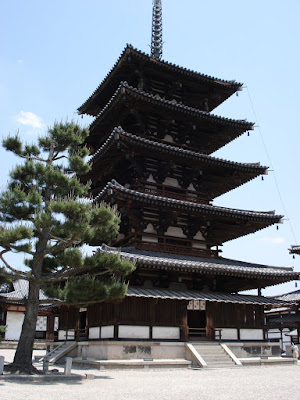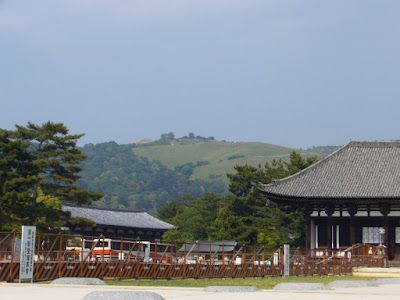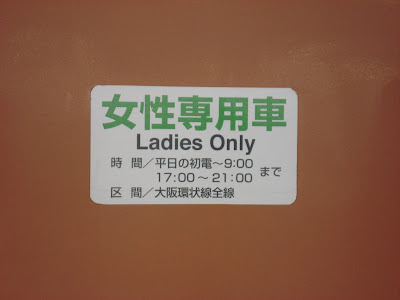Japan: Nagano
Karuizawa, 軽井沢,a town situated in the mountainous prefecture of Nagano.
 With several churches built in this area, the main train station has adopted a Western stained glass style in its design.
With several churches built in this area, the main train station has adopted a Western stained glass style in its design. Situated at at altitude of more than 900m above the sea level, it is much cooler than the nearby city of Tokyo. During the summer months, many Tokyolites escape the summer heat by cooling off in places like Karuizawa. Of course, people who can afford such luxury are the rich and the elites. In any case, people living in Tokyo do have the option of taking a break, and escape away from the stress of the city, to put themselves in the serenity of the mountain ranges and get in touch with nature. Well, most city dwellers around the world do have this choice.
Situated at at altitude of more than 900m above the sea level, it is much cooler than the nearby city of Tokyo. During the summer months, many Tokyolites escape the summer heat by cooling off in places like Karuizawa. Of course, people who can afford such luxury are the rich and the elites. In any case, people living in Tokyo do have the option of taking a break, and escape away from the stress of the city, to put themselves in the serenity of the mountain ranges and get in touch with nature. Well, most city dwellers around the world do have this choice. Karuizawa had played host to the Winter Olympic Games in 1998
Karuizawa had played host to the Winter Olympic Games in 1998 and the Summer Olympics in 1964. Certainly a unique place to visit.
and the Summer Olympics in 1964. Certainly a unique place to visit. The influx of city dwellers might not miss any stress from their studies or work, but certainly they will miss consumerism. Spacious malls housing branded labels have been built just outside the train station so that the tourists will not be too homesick.
The influx of city dwellers might not miss any stress from their studies or work, but certainly they will miss consumerism. Spacious malls housing branded labels have been built just outside the train station so that the tourists will not be too homesick. The rail tracks.
The rail tracks. With land spaces to spare, wide shopping alleys were built with a view of the golf course and the forest area.
With land spaces to spare, wide shopping alleys were built with a view of the golf course and the forest area. With shopping to do, with golf to swing, with nature close to heart, and stress faraway over the mountains, many have chosen Karuizawa as their second home. And many of them have spectacular gardens around their houses.
With shopping to do, with golf to swing, with nature close to heart, and stress faraway over the mountains, many have chosen Karuizawa as their second home. And many of them have spectacular gardens around their houses. Mirror, flowers, trees, crossroad junction.
Mirror, flowers, trees, crossroad junction. Mount Asama, the highest peak in this region.
Mount Asama, the highest peak in this region. The Shinano Rail serving the area. Although it might be more countryside than city-like, the fares can be a little daunting. It cost 210円 for a 2 minute ride.
The Shinano Rail serving the area. Although it might be more countryside than city-like, the fares can be a little daunting. It cost 210円 for a 2 minute ride.Labels: Japan





















































